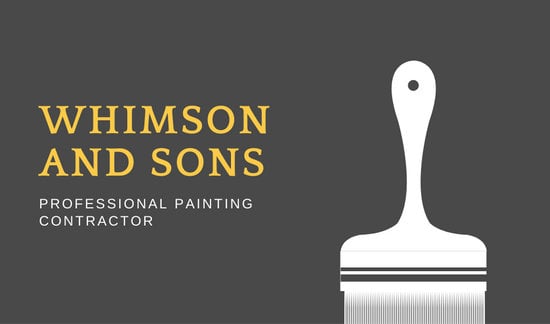Recognizing Seasonal Influences On Commercial Outside Painting: Necessary Knowledge For Success
Recognizing Seasonal Influences On Commercial Outside Painting: Necessary Knowledge For Success
Blog Article
Article Developed By-Carlson Urquhart
When you're preparing a commercial external paint project, seasonal variables can make or break your outcomes. You'll wish to consider how temperature level and humidity influence paint application and drying out times. Selecting the appropriate season can guarantee your paint adheres effectively and lasts longer. Yet which seasons are genuinely the very best for this type of job? Let's check out the key elements that can influence your project's success.
The Effect of Temperature on Paint Application
When you're planning a business external paint project, the temperature can substantially influence how well the paint sticks and dries.
Preferably, residential painting contractor okc intend to repaint when temperatures range in between 50 ° F and 85 ° F. If it's too cold, the paint might not treat appropriately, bring about problems like peeling off or cracking.
On the flip side, if it's as well warm, the paint can dry out too swiftly, avoiding proper bond and causing an unequal coating.
Link Website need to additionally consider the time of day; morning or late afternoon supplies cooler temperature levels, which can be more beneficial.
Always inspect the maker's suggestions for the certain paint you're using, as they frequently provide guidance on the suitable temperature variety for optimal outcomes.
Humidity and Its Result on Drying Times
Temperature isn't the only ecological factor that influences your industrial outside painting task; humidity plays a substantial role also. High moisture degrees can decrease drying out times considerably, influencing the general quality of your paint task.
When the air is saturated with wetness, the paint takes longer to cure, which can result in problems like inadequate attachment and a greater danger of mold growth. If you're painting on a specifically humid day, be prepared for extensive delay times between layers.
It's essential to monitor neighborhood weather conditions and plan appropriately. Ideally, aim for humidity levels in between 40% and 70% for ideal drying.
Keeping these consider mind ensures your project stays on track and supplies a long lasting coating.
Best Seasons for Commercial Outside Paint Projects
What's the most effective time of year for your industrial outside paint projects?
Springtime and very early loss are normally your best choices. Throughout these seasons, temperature levels are moderate, and humidity levels are typically reduced, creating ideal problems for paint application and drying.
Stay clear of summer season's intense heat, which can trigger paint to dry too quickly, causing poor adhesion and surface. Likewise, winter months's cool temperature levels can impede proper drying and curing, running the risk of the long life of your paint work.
Go for days with temperature levels between 50 ° F and 85 ° F for ideal results. Bear in mind to examine the local weather forecast for rain, as wet conditions can ruin your project.
Planning around these aspects ensures your paint task runs efficiently and lasts much longer.
Conclusion
In conclusion, planning your business exterior painting tasks around seasonal factors to consider can make a significant difference in the result. By organizing work throughout the perfect temperatures and humidity degrees, you'll guarantee much better adhesion and drying out times. Remember to watch on regional weather prediction and pick the correct time of year-- springtime and early autumn are your best bets. Taking these steps will certainly assist you attain a resilient and specialist finish that lasts.
